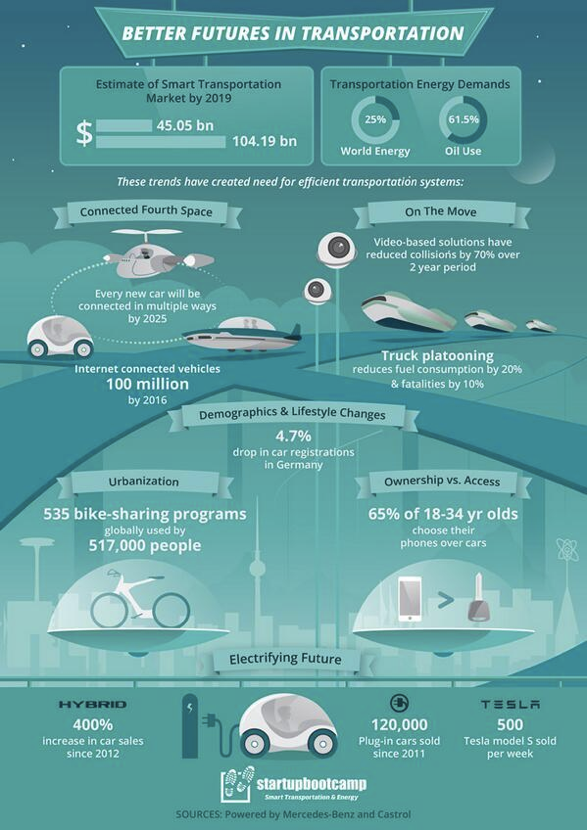 Transportation – While the autonomous car is in our future and will require many IoT innovations, there are many beneficial IoT deployments happening now. Cameras to detect proximity to objects and alert drivers to hazards and cellular internet connectivity provides real-time fleet management telemetry and autonomous alerts for driver protection in crashes. On the near-term horizon we will see more IoT intelligence in-car safety management and should expect IoT car to car communications to assist in this. Integration of web services into mass transit is becoming ubiquitous and now mass transit providers are integrating IoT sensors to monitor the condition of critical feet safety subsystems, utilization, temperature, ambient gasses as well as surveillance for passenger and asset security.
Transportation – While the autonomous car is in our future and will require many IoT innovations, there are many beneficial IoT deployments happening now. Cameras to detect proximity to objects and alert drivers to hazards and cellular internet connectivity provides real-time fleet management telemetry and autonomous alerts for driver protection in crashes. On the near-term horizon we will see more IoT intelligence in-car safety management and should expect IoT car to car communications to assist in this. Integration of web services into mass transit is becoming ubiquitous and now mass transit providers are integrating IoT sensors to monitor the condition of critical feet safety subsystems, utilization, temperature, ambient gasses as well as surveillance for passenger and asset security.
Smart city traffic control using intersection traffic detection and intersection to intersection grid communication is being deployed for compound benefits. First, using IoT to optimize traffic flow provides huge savings and far less disruption over traditional solutions such as adding traffic lanes in urban areas. Smart traffic optimization also reduces the “stop-start” of traffic with a major benefit to reducing carbon emissions. Smart traffic control can also allow traffic routing around construction or congested areas and provide fast path routes to emergency vehicles.
IoT systems are being heavily deployed for Fleet Management solutions. IoT geo-location, vehicle condition monitoring and integrated sensors such as accelerometers, fleet owners see multiple benefits. First, the location of all assets is visible. Routes can be optimized and conveyed to drivers. The condition of vehicles can be monitored and any repairs can be prioritized and preventative maintenance enables operators to manage uptime as well as capital cost savings. Operator vehicle use can also be monitored with accelerometers and traffic incidents can be easily detected. Significant value can also be gained by analyzing fleet use, fuel consumption, mileage monitoring, optimizing routes, assuring continued vehicle compliance, supply chain integration, and on-time delivery information to drive customer satisfaction.
IoT is also beginning to have an impact on multi-modal shipments. High value assets in transit have been tagged with RFID technology already, but use of GPS and other RF technologies is becoming more commonplace. By equipping shipping containers, pallets, or high value assets with smart devices, location, condition and ambient status can be monitored enabling improved logistics management, asset tracking, and ultimately customer satisfaction.
Finally, as we see autonomous car technology become mainstream, we should also expect many of these IIoT solutions come together to significantly transform commute and overall transportation experiences. New service providers will match user experience preferences with pay-per-use transportation all enabled by Industrial as well as Consumer IoT.
